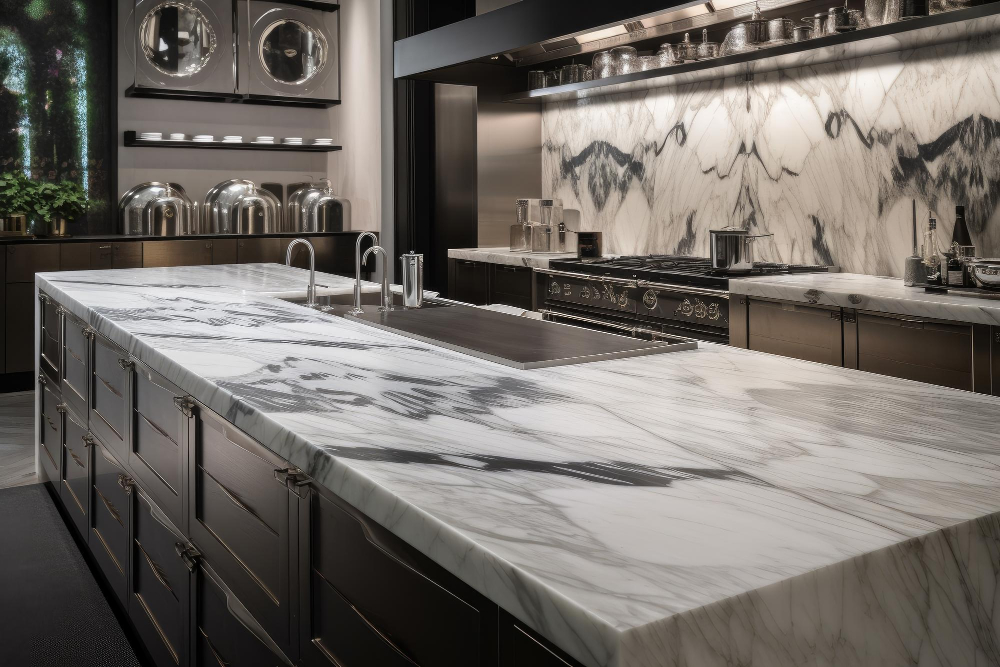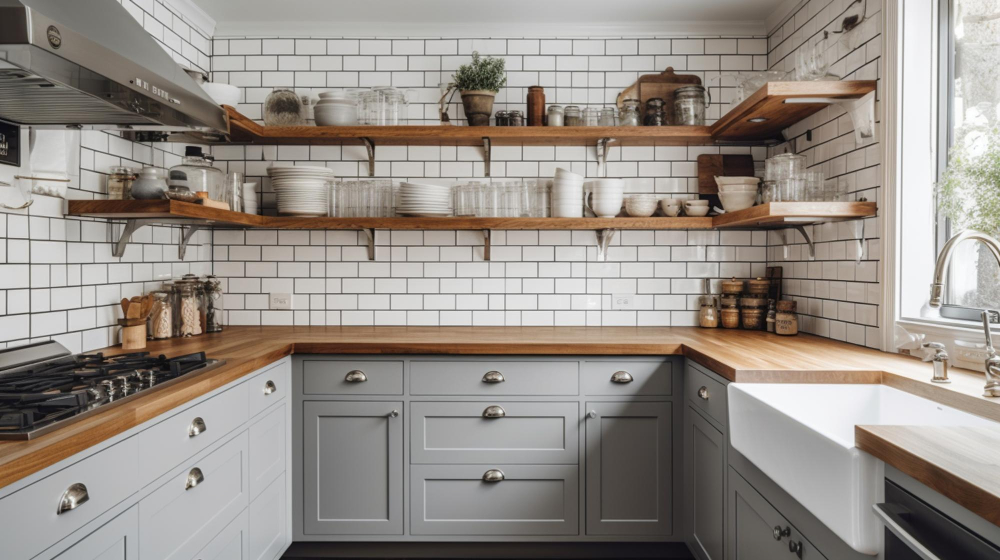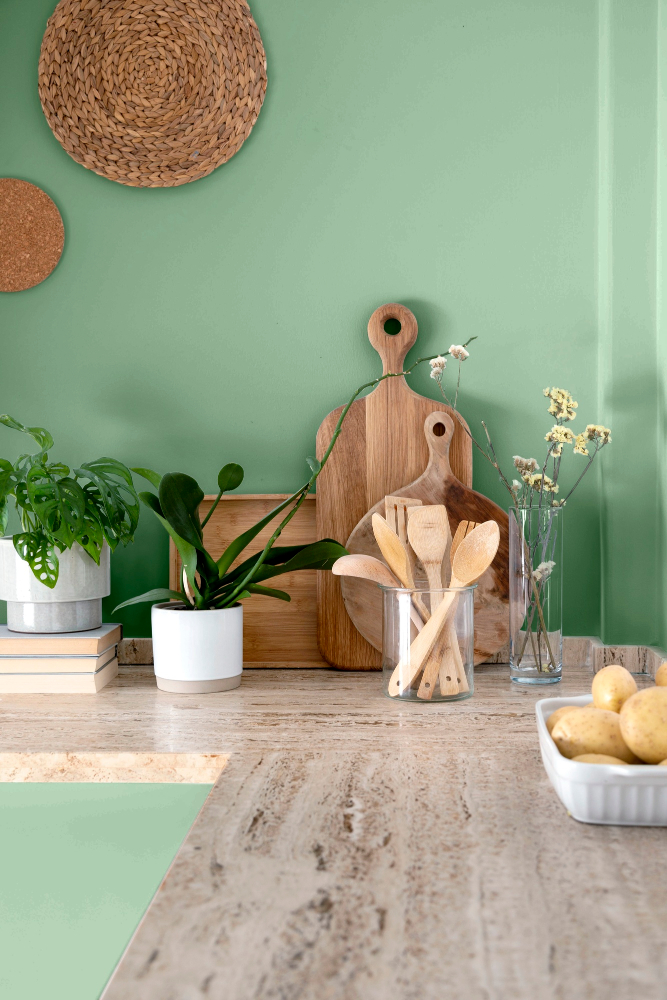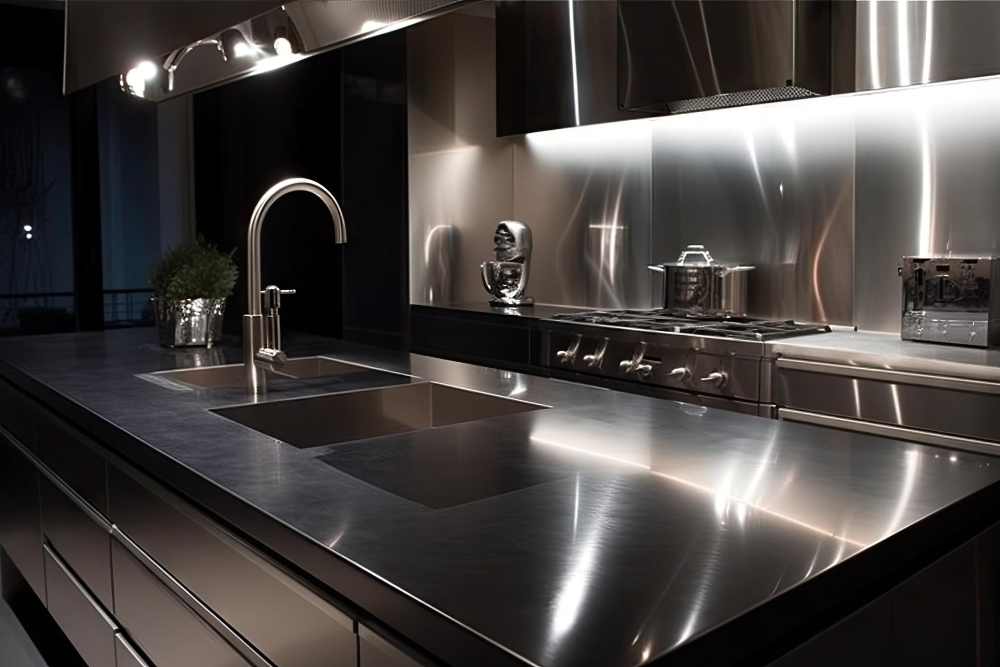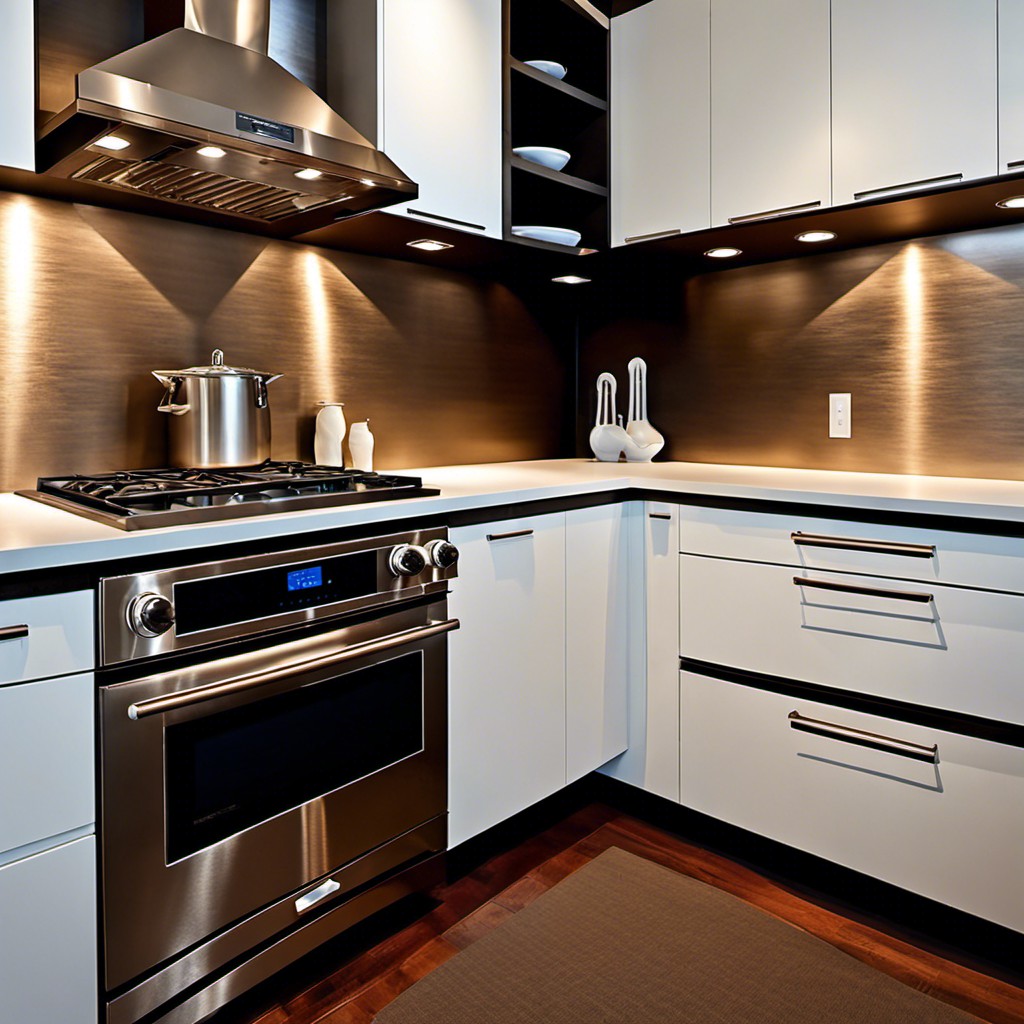Last updated on
Discover various attractive alternatives to bullnose tile edges that will transform your space with a touch of elegance and sophistication.
Are you tired of the same old bullnose tile edge that’s been used in every bathroom and kitchen design for decades? Well, it’s time to switch things up and get creative with your tile edging! There are plenty of alternative options out there that can add a unique touch to your home decor without breaking the bank. In this article, we’ll explore some exciting alternatives to bullnose tile edge that will elevate any space while keeping things budget-friendly.
So, let’s dive in and discover some fresh ideas for your next tiling project!
Understanding Bullnose Tile Edge
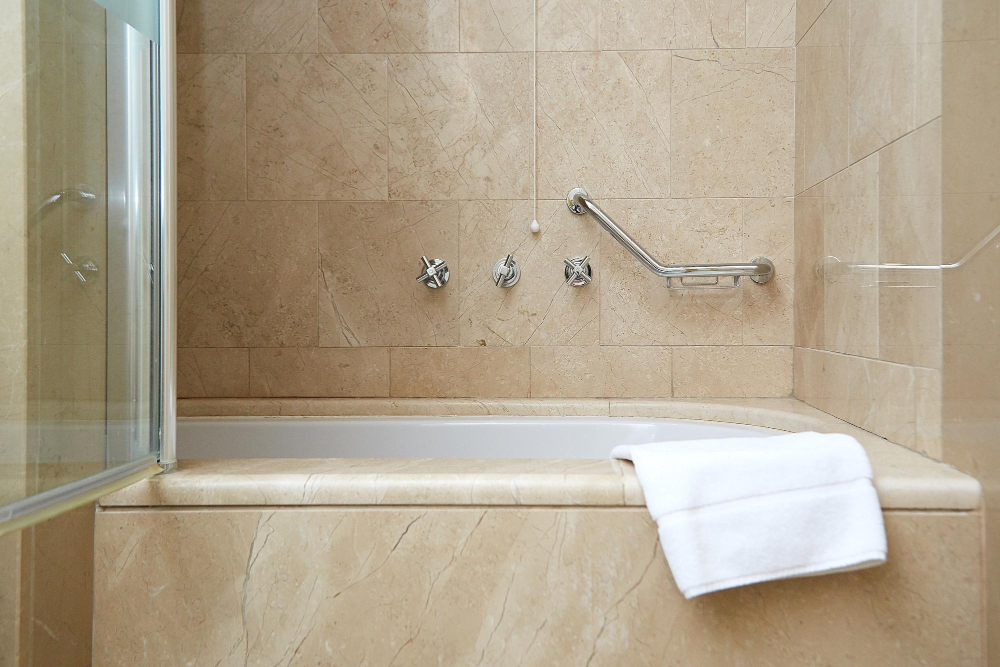
Bullnose tile edge is a popular choice for finishing off tiled surfaces, such as walls, floors, and countertops. It’s a rounded trim piece that creates a smooth transition between the tile surface and the adjacent wall or floor.
Bullnose tiles are available in various sizes to match different types of tiles.
While bullnose edges have been widely used in home decor for many years due to their versatility and simplicity, they may not always be the best option when it comes to creating unique designs or adding character to your space. That’s why we’ve compiled this list of alternative options that can help you achieve an eye-catching look without sacrificing functionality or budget constraints.
Tile Edge Profiles
A tile edge profile is the shape of the edge of a tile and determines how it will look when installed. The most common types of profiles include bullnose, square, beveled, and rounded edges.
Bullnose tiles have been popular for years because they provide a smooth finish that’s easy on the eyes. However, if you’re looking for something different or want to create an eye-catching design feature in your space without breaking the bank – then exploring other options might be worth considering.
Square-edged tiles offer clean lines and modern aesthetics while beveled edges give depth and dimensionality to any surface they adorn. Rounded-edge tiles soften harsh angles in rooms with sharp corners or straight lines by adding curves where needed.
Metal Tile Trim
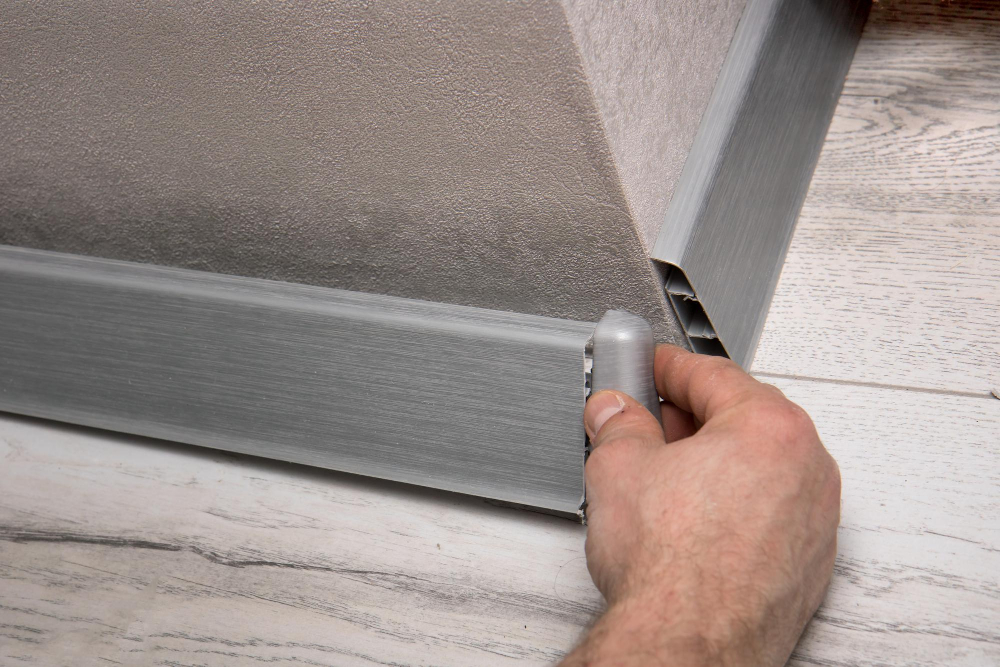
Metal trims come in various finishes, including chrome, brushed nickel, and oil-rubbed bronze. They are also available in different shapes such as L-shaped or J-shaped profiles.
One of the benefits of using metal trim is its durability. It provides excellent protection for the edges of your tiles against chipping or cracking while adding an attractive accent to your design.
Another advantage is that it’s easy to install with adhesive glue or screws depending on the type you choose. You can use metal trims for both wall and floor tiles applications.
Stone Tile Edging
Stone tiles come in various shapes and sizes, making them versatile enough to use with any type of tile. You can choose from different types of stones such as granite, marble or travertine that will complement your existing decor style.
One popular way to incorporate stone into your tiling project is by using pencil trim pieces made from the same material as the field tiles. These thin strips are perfect for creating a clean edge between two different types of tiles while adding texture and depth to your design.
Another option is using natural stone bullnose pieces that have been cut specifically for edging purposes. They provide a seamless transition between two surfaces while giving off an earthy vibe that’s both elegant and timeless.
Incorporating natural stones into your tiling project adds character and warmth to any space without compromising on durability or functionality.
Ceramic Tile Edging

Ceramic tiles are versatile and come in various shapes, sizes, colors, and finishes that can complement any design style. You can choose from bullnose or pencil trim pieces to create a clean edge finish on your tiled surface.
One of the benefits of using ceramic tile edging is its durability. Ceramic tiles are resistant to scratches, stains, moisture damage making them ideal for high traffic areas like bathrooms or kitchens.
Another advantage of using ceramic tile edging is that it’s easy to install with minimal tools required. You can use adhesive glue or thin-set mortar to attach the trim piece onto the edge of your tiled surface.
To add some character and depth into your space while still keeping things budget-friendly consider mixing different colored ceramics trims together creating unique patterns around corners or borders.
Wood Edge Trim
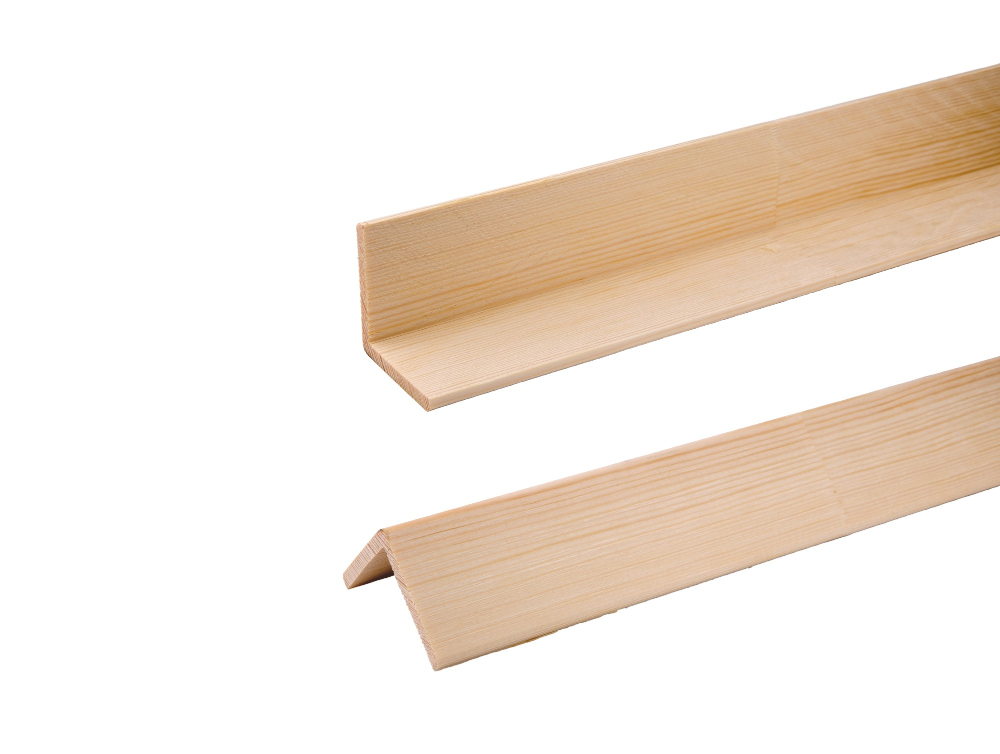
It’s perfect for creating an earthy vibe in your home decor while adding warmth and texture to any space. Wood edge trims come in various types of wood, including oak, maple, cherrywood, pine or even bamboo.
One of the advantages of using wood as an edging material is that it can be easily stained or painted to match your existing decor. You can also choose from different profiles such as quarter round or flat profiles depending on the style you want to achieve.
When installing wood edge trim with tiles ensure that they are cut precisely so that there are no gaps between them which could cause water damage over time. Make sure the adhesive used is waterproof since moisture may seep through causing warping and rotting.
Quarter Round Tile Trim
This type of trim is typically made from ceramic or porcelain and comes in various sizes, colors, and finishes. Quarter round tile trim can be used on both walls and floors, making it an excellent choice for any tiling project.
One advantage of using quarter round tile trim over bullnose is its versatility. It can be used with different types of tiles such as subway tiles or mosaic sheets without looking out-of-place.
This type of edging provides a smooth transition between two surfaces while adding depth to the design.
Another benefit is that quarter round tile trims are easy to install compared to other options like metal profiles or custom-made bullnoses which require professional installation skills.
Glazed Tile Edge
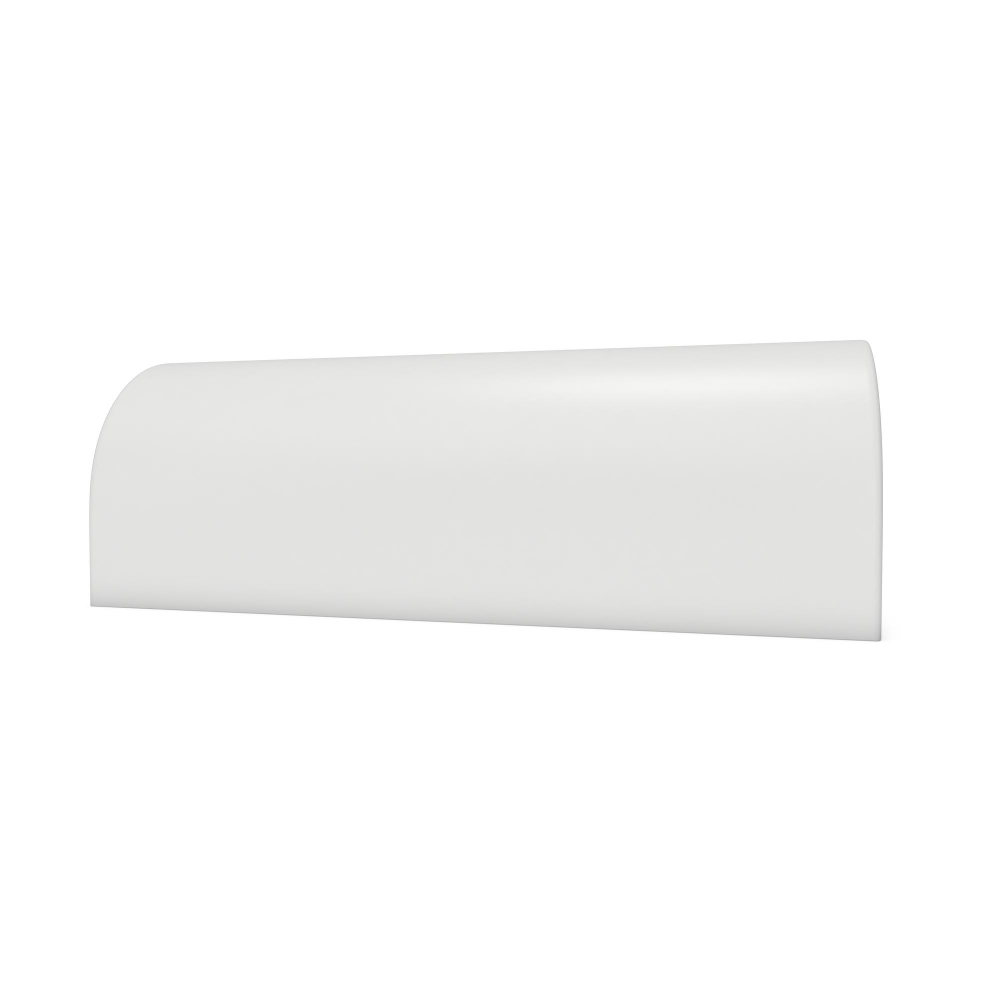
Glazing is the process of applying a glass-like coating to ceramic or porcelain tiles, which creates a smooth and glossy surface. This type of tile edge can add depth and dimension to your space while also providing protection against moisture damage.
One advantage of using glazed tiles is that they come in various colors, patterns, shapes, sizes that can match any decor style. You can choose from neutral shades like white or beige for a classic look or go bold with bright hues like reds or blues.
Another benefit is that glazed tiles are easy to clean since their surface doesn’t absorb dirt easily compared to unglazed ones. They’re also resistant to scratches and stains making them ideal for high traffic areas such as kitchens and bathrooms.
When it comes time for installation make sure you use the right adhesive material because some adhesives may not bond well with the glaze on these types of tiles leading them falling off over time.
Pencil Tile Trim
This type of trim features a thin, pencil-like shape that can be used as an accent or border for your tiles. It’s perfect for creating clean lines and adding definition to your design.
One of the great things about pencil tile trim is its versatility. It comes in various materials such as metal, ceramic, glass or stone which makes it easy to match with different types of tiles and decor styles.
Another advantage of using this type of edging is its affordability compared with other decorative trims like marble accents or custom bullnose creations.
Beveled Edge Tiles

These tiles have a slanted or angled surface that creates a subtle shadow effect, giving the illusion of more texture and movement in your design.
Beveled edges can come in different sizes, from small 1/4 inch bevels to larger 3-inch bevels. They also come in various materials such as ceramic, porcelain or natural stone like marble.
One great thing about using beveled edge tiles is their versatility; they work well with both modern and traditional designs. You can use them as an accent border around the perimeter of your tiled area or create patterns by alternating them with flat-edged tiles.
Another advantage of using these types of tile edges is how easy it is to clean them compared to other decorative edging options like metal trims which may require special cleaning solutions over time.
Rectified Tile Edge
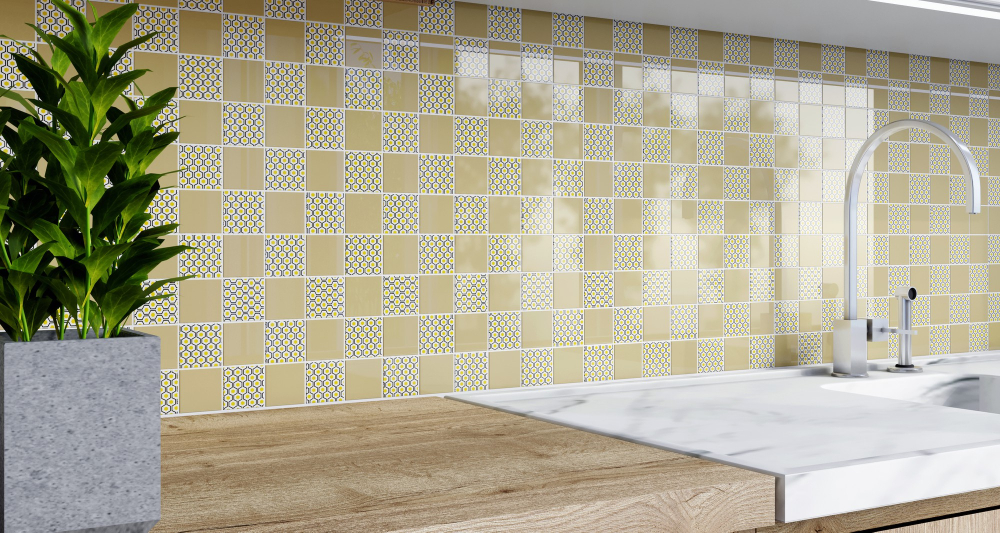
Rectification is a process that involves cutting the tiles to precise measurements after they have been fired in the kiln. This results in perfectly straight edges that can be installed with minimal grout lines, creating a seamless finish.
Rectified tiles come in various sizes and shapes, making them versatile enough to use on walls or floors. They also work well with different materials such as glass or metal trim pieces.
One thing to keep in mind when using rectified tiles is that they require more precision during installation than regular tiles due to their sharp edges. It’s essential to hire an experienced installer who has worked with these types of tiles before.
Caulking Tile Edges
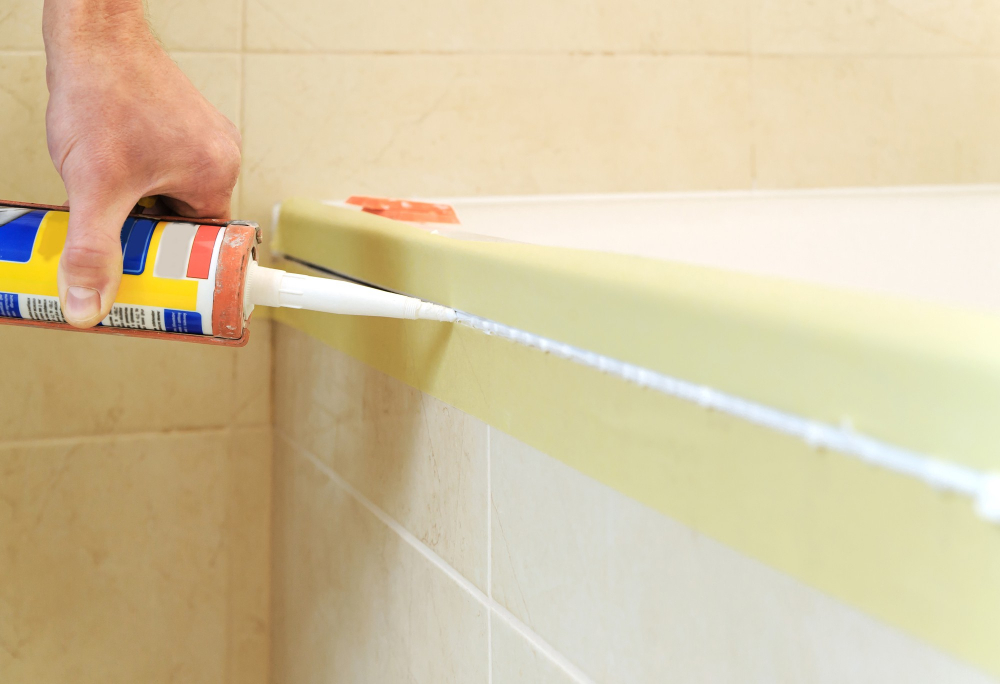
It’s especially useful when working with uneven or irregular tiles that don’t fit perfectly together. Caulk can be used to fill in gaps between tiles, creating a smooth and seamless transition from one tile to the next.
To use caulk on your tile edges, start by cleaning the area thoroughly with soap and water. Once it’s dry, apply painter’s tape along both sides of the edge where you’ll be applying caulk.
This will help keep things neat and tidy while also ensuring that you get straight lines.
Next, load up your caulking gun with silicone or acrylic caulk (depending on what type of surface you’re working with). Apply a steady bead of caulk along the edge where two tiles meet – make sure it fills any gaps completely.
Once applied evenly across all areas needed; remove excess using either finger tips or damp cloth before allowing it dry according to manufacturer’s instructions. Caulk comes in various colors so choose one that matches closely enough if not exactly as this will give an overall polished look once dried out completely.
Grout Line Transition Solutions
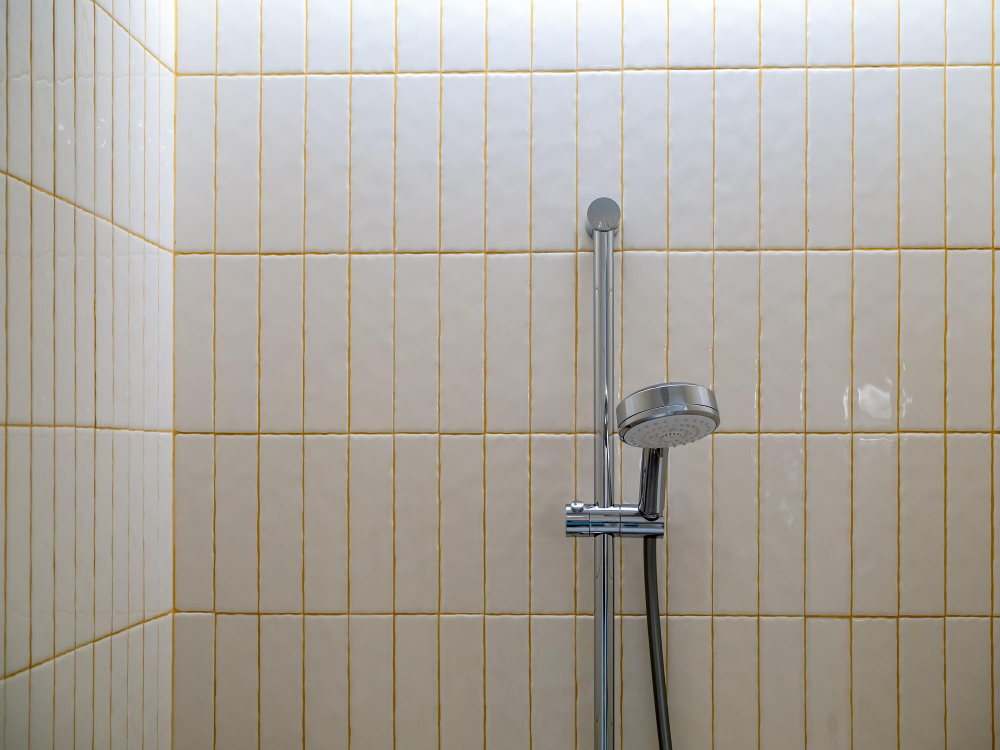
Fortunately, there are several solutions available that can help you achieve a seamless and polished finish. One option is to use a metal profile edge that fits snugly over the edge of your tiles and covers up any exposed edges while providing a smooth transition between different surfaces.
Another solution is to use colored grout for your transitions instead of traditional white or gray. This technique allows you to create an eye-catching contrast between different areas while still maintaining a cohesive look throughout your space.
If you’re looking for something more decorative, consider using painted tile edges or customized bullnose tiles with unique designs and patterns. These options allow you to add personality and flair without sacrificing functionality.
Schluter Tile Edge Strips
These strips come in various materials, including aluminum, stainless steel, and PVC. They offer both functional and aesthetic benefits by protecting the edges of your tiles from chipping or cracking while also providing an attractive finish.
One of the most significant advantages of Schluter Tile Edge Strips is that they can be easily installed without any special tools or skills required. The strips simply snap into place over the edge of your tiles using a clip system that ensures a secure fit.
Another benefit is that these strips come in different sizes and shapes to accommodate various tile thicknesses, making them suitable for use with almost any type of tile installation project.
Customized Tile Edge Designs
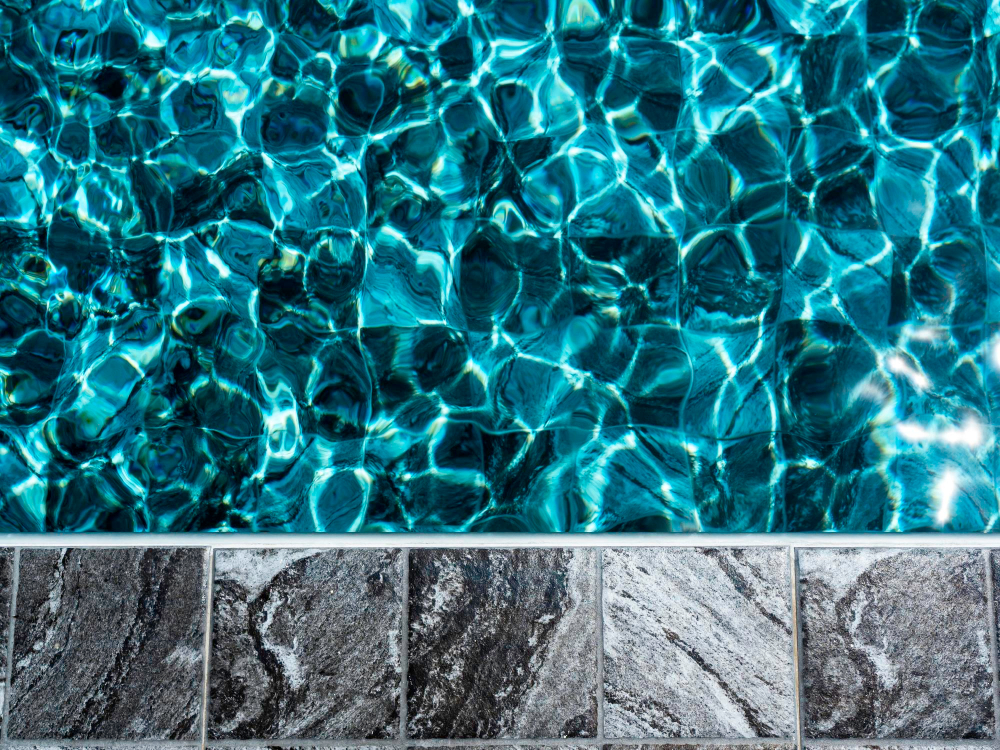
You can create a custom bullnose edge by using specialized tools or hire professionals who specialize in creating bespoke tile edges. Customizing your tile edge design allows you to add intricate details that match the overall theme of your space while also giving it an exclusive look.
You can choose from various materials such as metal, wood, stone or ceramic tiles and customize them according to your preference. For instance, if you have a rustic-themed kitchen with wooden cabinets and flooring, adding wooden trim around the tiles will give it an authentic feel.
Another option is painting the edges of plain white subway tiles with bold colors like black or navy blue for added contrast against light-colored walls. This technique works well in modern bathrooms where minimalism is key.
Natural Stone Tile Edge Trim
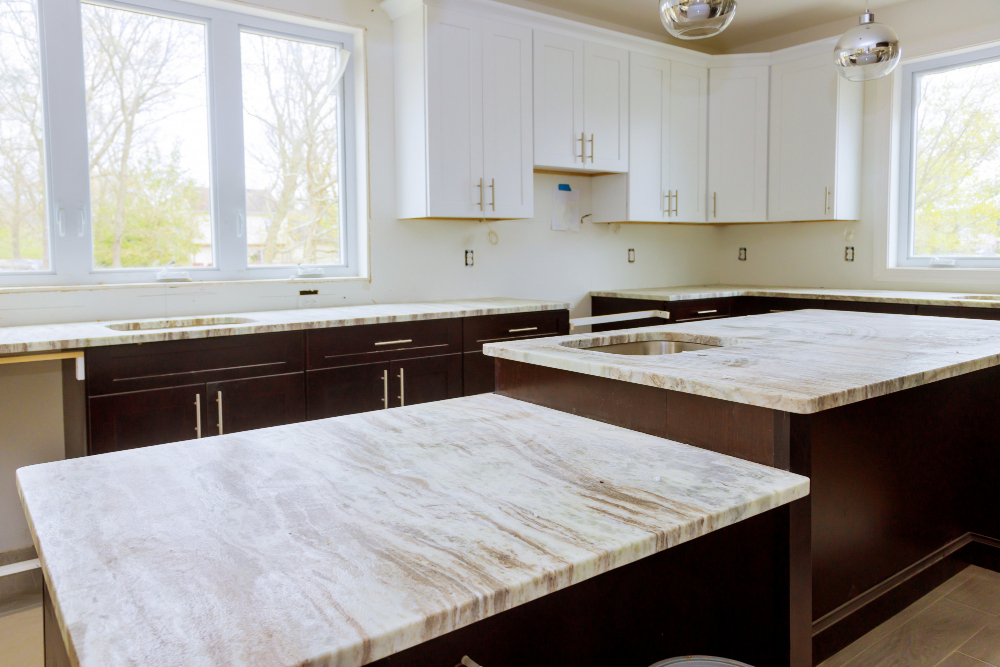
Natural stones like marble, granite, and travertine are known for their durability and timeless beauty. They can be used as an edging material that complements the natural look of your tiles while providing protection against chipping or cracking.
One popular way to use natural stone tile edge trim is by creating a border around your tiled area. This technique works particularly well in bathrooms where you can create an accent wall with mosaic tiles bordered by marble or granite edges.
Another way to incorporate natural stone into your tiling project is by using it as stair nosing. Stair nosing refers to the rounded portion at the front of each step that provides traction and prevents slipping accidents on stairs.
By using natural stone tile edge trim as stair nosing, you not only enhance safety but also add elegance and style.
When choosing which type of natural stone tile edge trim will work best for your space, consider factors such as color scheme, texture preference, maintenance requirements (some stones require more upkeep than others), budget constraints among other things.
Glass Tile Edge Trim
Glass tiles are known for their sleek and sophisticated look, making them an excellent choice for contemporary designs. However, the edges of glass tiles can be sharp and dangerous if left untrimmed.
Thankfully, there are several options available when it comes to glass tile edging. One popular choice is using metal profiles that come in various finishes such as chrome or brushed nickel that complement the color scheme of your space.
Another option is using pencil liners made from clear or colored glass that provide a subtle yet stylish finish around your tiled surface’s perimeter. These pencil liners also come in different sizes and shapes like round or flat edges depending on what suits your design best.
Lastly, you can opt for custom-made bullnose pieces created by cutting down larger sheets of tempered glass into smaller strips with rounded corners suitable as edging material.
Metal Profile Edges
These metal strips come in various finishes, including stainless steel, aluminum, brass, and copper. They are easy to install and provide a clean transition between tiles while protecting the edges from chipping or cracking.
One of the most significant advantages of using metal profile edges is their durability. Unlike traditional bullnose tiles that can chip or crack over time due to wear and tear, these metal strips offer long-lasting protection against damage caused by foot traffic or other impacts.
Another benefit of using metal profiles is their versatility in design options. You can choose from different shapes such as L-shaped profiles for corners or straight-edged ones for flat surfaces like countertops.
You have several finish options available ranging from brushed nickel to polished chrome which allows you more flexibility when it comes down matching with your decor style.
Mitering Technique
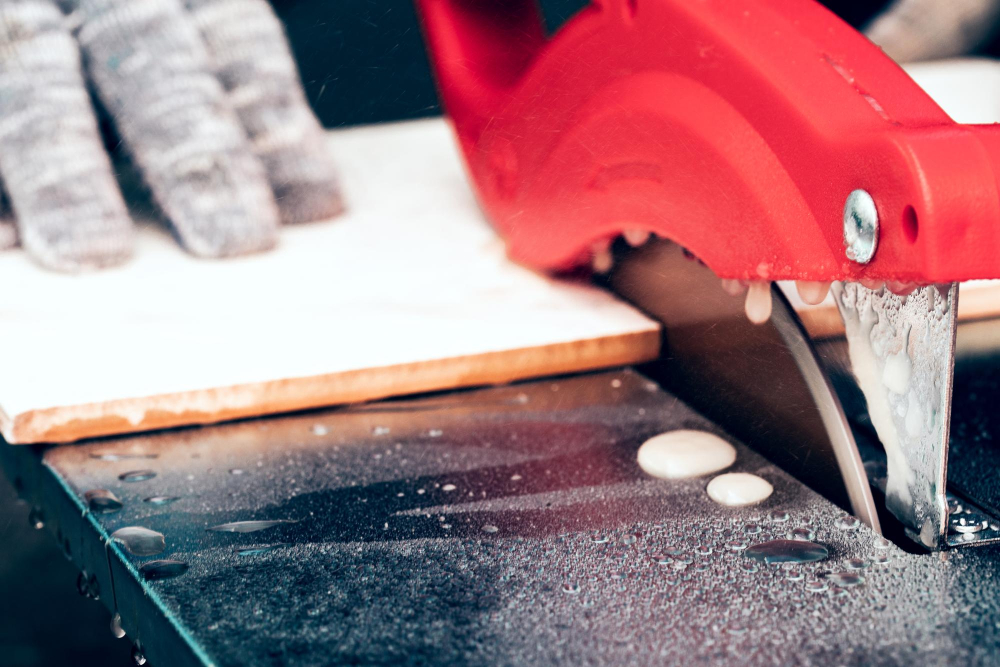
This technique involves cutting the tiles at a 45-degree angle to create a seamless corner that looks like one continuous piece of tile. Mitering is commonly used with natural stone or porcelain tiles, but it can also be done with ceramic and glass tiles.
To achieve this technique, you’ll need to use specialized tools such as a wet saw or masonry blade cutter. It’s essential to measure accurately before making any cuts because even the slightest mistake can ruin the entire project.
Mitered edges work well in modern designs where sharp lines and angles are prominent features. They add depth and dimensionality while creating an illusion of space by eliminating visible grout lines around corners.
Custom Bullnose Tile
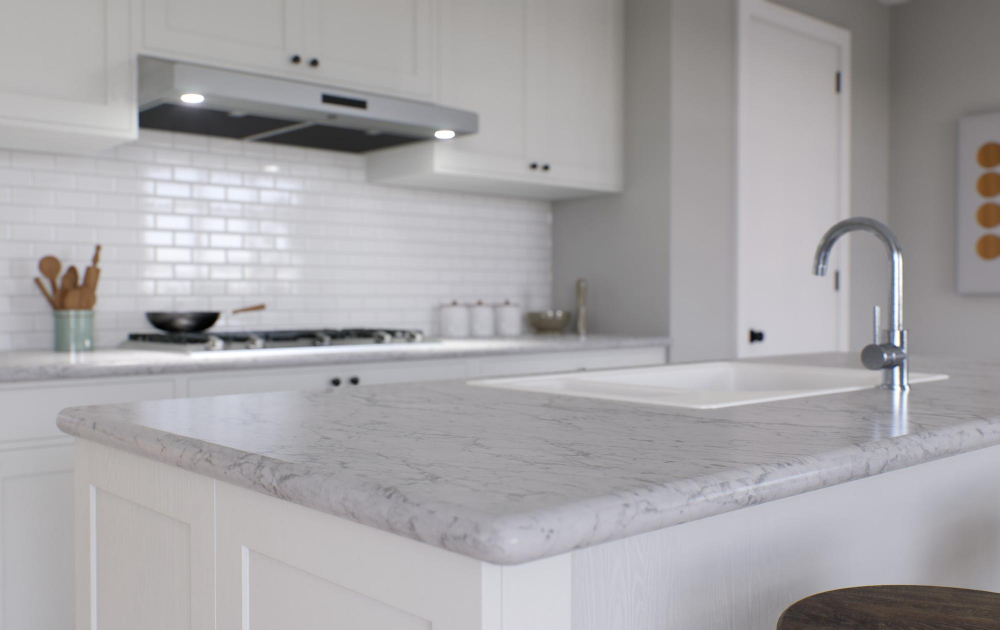
This technique involves creating your own bullnose edge by cutting and shaping the tiles yourself. It may sound intimidating, but with the right tools and some patience, it can be done easily.
To create custom bullnose tile, you will need a wet saw or angle grinder with diamond blades that can cut through ceramic or porcelain tiles without chipping them. You’ll also need sandpaper of varying grits to smooth out any rough edges after cutting.
Once you have all your materials ready, measure and mark where you want your bullnose edge on each tile before making any cuts. Then carefully cut along the marked line using either the wet saw or angle grinder until you achieve your desired shape.
Afterward, use sandpaper of increasing grits starting from 80-grit up to 400-grit until all rough edges are smoothed out completely.
DIY Bullnose Creation
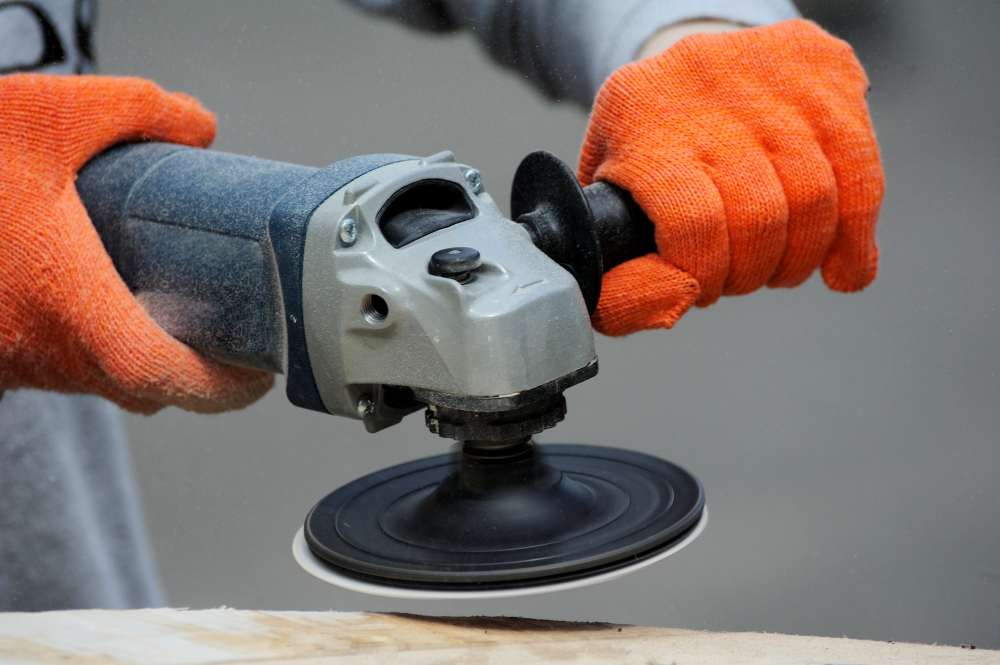
With the right tools and materials, it’s possible to create custom bullnose tiles that perfectly match the rest of your design.
To make DIY bullnose tiles, you’ll need an angle grinder with a diamond blade attachment or a wet saw with an attached profile wheel. You can also purchase specialized tools designed specifically for creating bullnose edges.
Once you have the necessary equipment, start by cutting down regular tiles into smaller pieces that will fit along the edge of your surface area. Then use either tool mentioned above to shape one side of each piece into a rounded or beveled edge until it matches up seamlessly with its neighboring tile.
While this method may require some extra effort on your part compared to purchasing pre-made options from home improvement stores or online retailers, it allows for complete customization over size and color while saving money in comparison.
Metal Trim Options
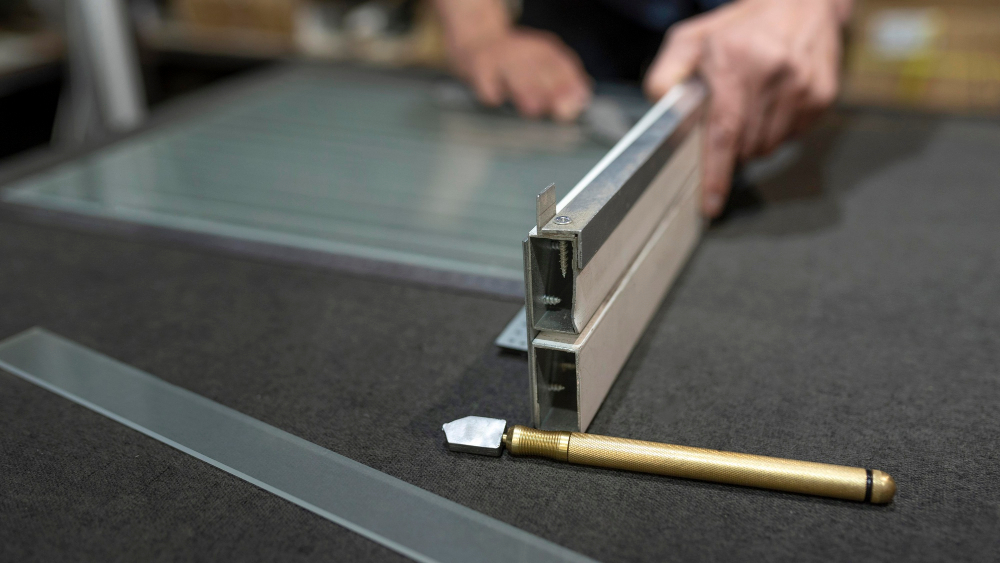
Metal trims come in various finishes, including chrome, brushed nickel, brass, and copper. They can be used with any type of tile material such as ceramic or porcelain tiles.
One of the most common metal trim options is the L-shaped profile that fits over the edge of your tiles. This option provides excellent protection against chipping while also adding an attractive finishing touch to your tiling project.
Another popular metal trim option is Schluter Tile Edge Strips which offer both functionality and style. These strips provide a clean transition between different types of flooring materials while also protecting exposed tile edges from damage.
For those who prefer something more decorative than functional, there are plenty of customized metal edge designs available on the market today that can add an extra layer of elegance to any space.
Using metal trims for edging offers durability and longevity compared to other materials like wood or plastic which may wear out quickly over time due to moisture exposure or frequent use.
Marble Accent Trims
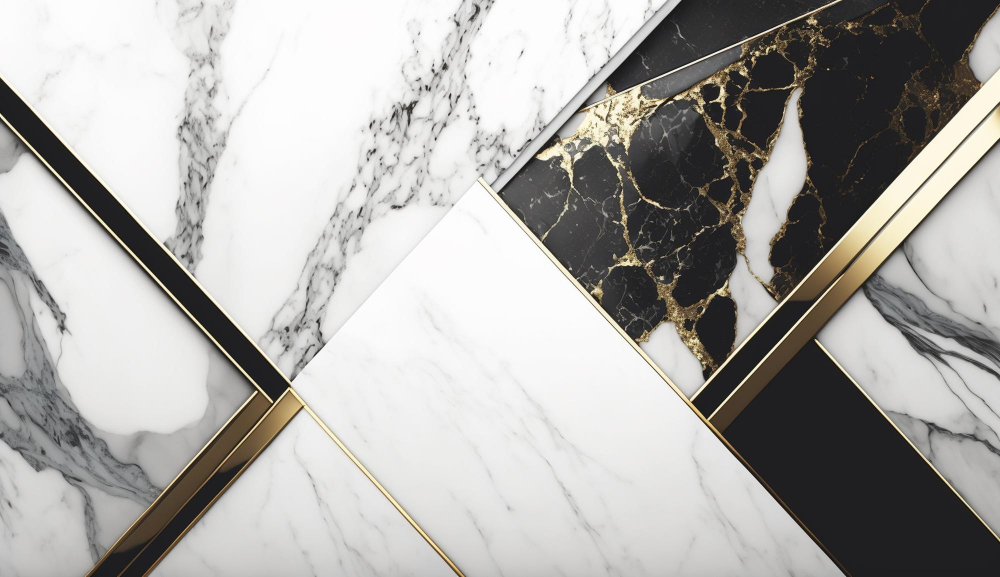
They add an elegant touch to any space, whether it’s a bathroom or kitchen backsplash. Marble is known for its durability and resistance to moisture, making it an ideal choice for areas that experience high levels of humidity.
One way to incorporate marble accent trims into your tiling project is by using them as borders around the perimeter of your tiles. This creates a stunning frame effect that draws attention to the center of the design while adding depth and dimension.
Another way you can use marble accents is by creating intricate designs with different colored marbles or combining them with other materials such as glass or metal trim pieces. The possibilities are endless when it comes to customizing your tile edges with marble accents!
While using natural stone like marble may seem expensive at first glance, there are affordable options available in pre-cut sizes that can be easily installed without breaking the bank. Plus, investing in quality materials will ensure longevity and prevent costly repairs down the line.
Ceramic Tile Edge Finishes
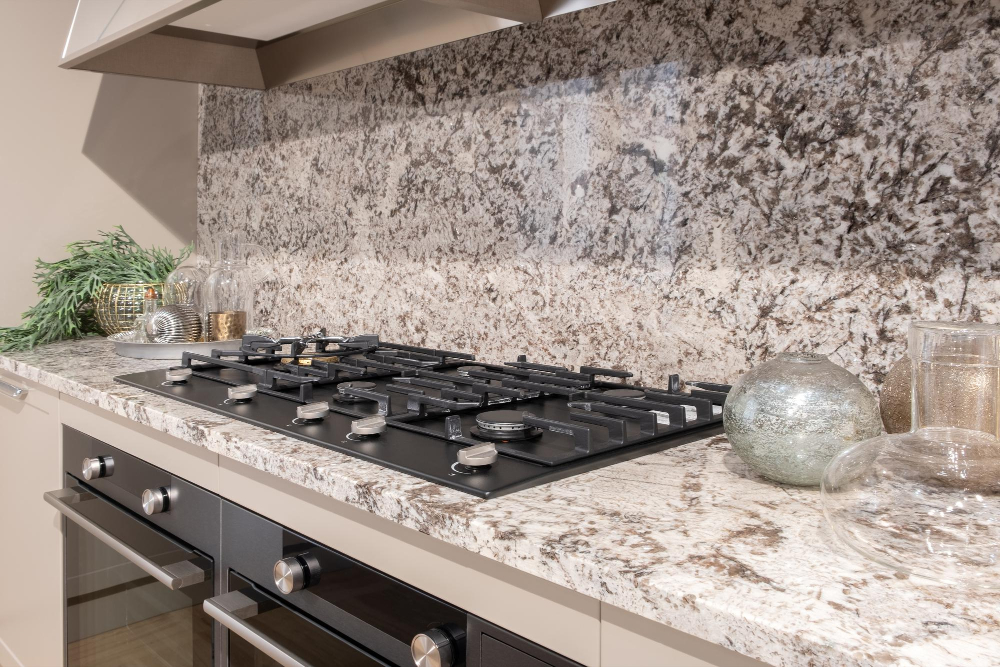
They come in various shapes and sizes that can be used to create unique patterns on walls or floors. However, when it comes to edging ceramic tiles, the options may seem limited at first glance.
But don’t worry! There are several ways you can finish off your ceramic tile edges with style. One option is using bullnose tiles specifically designed for this purpose; they have a rounded edge that creates a smooth transition from the tile surface to the wall or floor.
Another alternative is using metal trim pieces such as Schluter strips which offer both protection and aesthetic appeal while providing an elegant look around corners or exposed edges of tiled surfaces.
You could also opt for pencil liners – thin rectangular-shaped pieces of ceramic material – which add subtle detail along the edge of your tiled surface without overpowering its design elements.
There’s no need to settle for boring bullnose finishes when it comes time to complete your tiling project.
Decorative Tile Borders
These borders can be made from various materials such as ceramic, glass or stone tiles that come in different shapes and sizes. You can choose from intricate patterns or simple designs depending on the look you want to achieve.
Decorative tile borders work well with both floor and wall tiles. They create a visual break between two different types of tiles while adding interest to the overall design.
For instance, if you have plain white subway tiles installed in your bathroom walls, adding a decorative border made of colorful mosaic pieces will give it an instant pop of color.
When choosing decorative tile borders for your project, consider the size of the room and how much space is available for installation. A small bathroom may benefit more from narrow border strips than large ones that could overwhelm its limited space.
Schluter Tile Edge System
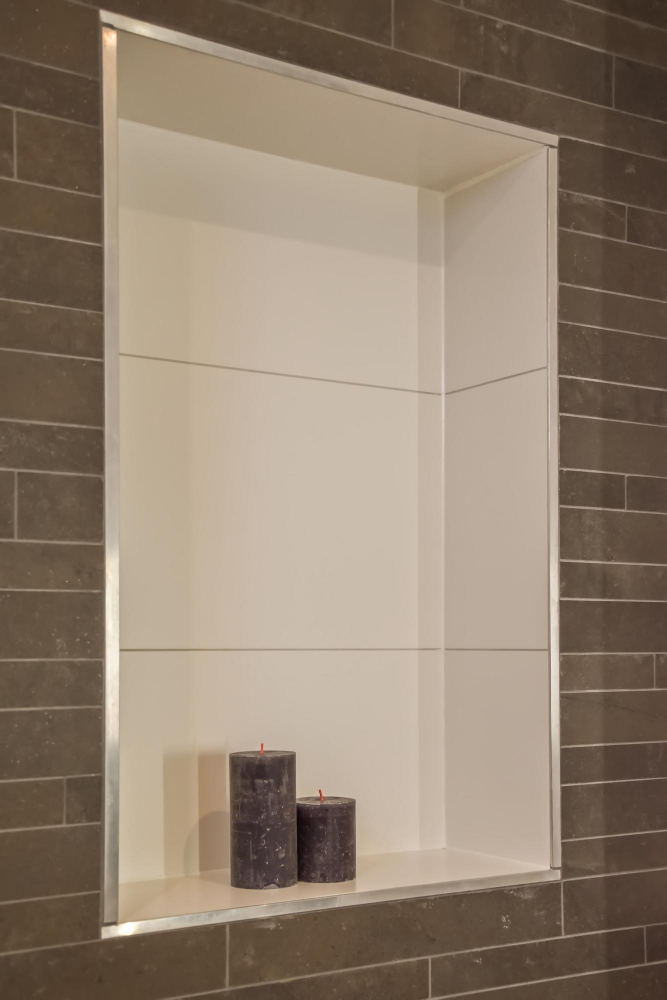
This system provides a sleek, finished look while also protecting the edges of your tiles from chipping or cracking over time. The Schluter Tile Edge System comes in various profiles, including Jolly, Rondec, Quadec and Schiene which can be used with different types of tiles such as ceramic or natural stone.
One great advantage of using the Schluter Tile Edge System is its versatility; it can be installed on floors as well as walls for an elegant finish. This system allows you to create custom designs by mixing and matching different profiles and finishes.
If you’re looking for an easy-to-install solution that will give your tiling project a professional look without breaking the bank then consider using the Schluter Tile Edge System.
PVC Edge Trim Profiles
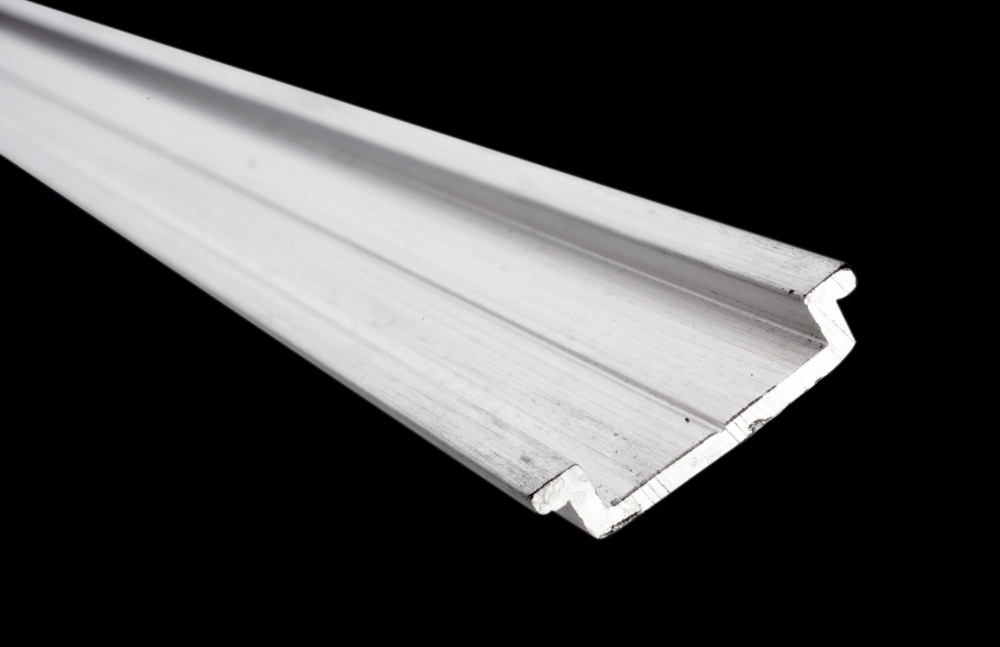
These profiles come in various shapes, sizes, and colors to match any tile design or decor theme. PVC edge trim profiles provide a clean finish while protecting the edges of your tiles from chipping or cracking over time.
One of the most significant advantages of using PVC edge trim is its affordability compared to other edging options like metal trims or natural stone accents. It’s also easy to install with adhesive glue, making it an ideal DIY project for homeowners looking for budget-friendly tiling solutions.
Another benefit is that PVC edge trim can be used on different types of tiles such as ceramic, porcelain, glass mosaic tiles without compromising their aesthetic appeal. You can choose from straight-edge trims for modern designs or curved-edge trims for more traditional looks.
Wood Look Tile Edging
It’s perfect for creating a cozy atmosphere in your home while still maintaining the durability of ceramic or porcelain tiles. Wood-look tile edging comes in various finishes, including oak, maple, and cherrywood.
You can choose from different profiles such as quarter round or flat trim to achieve the desired effect.
One advantage of using wood-look tile edging is that it creates a seamless transition between your floor tiles and walls without having to use bullnose pieces that may not match perfectly with your chosen flooring design.
Another benefit of using this type of edge trim is its affordability compared to real hardwood trims which can be quite expensive. With wood-look tile edges, you get the same aesthetic appeal at a fraction of the cost.
When installing wood look-tile edges on floors or walls with high moisture content like bathrooms or kitchens ensure they are sealed correctly so they don’t warp over time due to water damage.
Colored Grout Finishing

Colored grouts come in a variety of shades that can complement or contrast with your tiles, creating an eye-catching effect. You can choose from bold colors like red or blue for a statement look, or opt for more subtle hues like beige or gray that blend seamlessly with the tiles.
To achieve this look, simply mix the colored pigment into the grout before applying it between the tiles. Once dry, wipe away any excess residue on top of each tile surface using a damp sponge.
Colored grouting is not only aesthetically pleasing but also practical as it helps hide dirt and stains better than traditional white cement-based options. It’s important to note that darker-colored pigments may require additional sealing after installation due to their tendency towards staining over time.
Painted Tile Edge Technique
This method involves painting the exposed edge of your tiles with a complementary or contrasting color that matches your decor style. You can use any type of paint, including acrylic or enamel paints, depending on the surface material.
To achieve this look, start by cleaning and sanding down the edges of your tiles before applying painter’s tape around them to protect surrounding surfaces from accidental splatters. Then apply two coats of paint using a small brush or roller in thin layers allowing each coat to dry completely before adding another layer.
This technique works best with ceramic tiles as they are easy to clean and have smooth surfaces that allow for better adhesion between paint layers. However, it may not be suitable for high-traffic areas such as floors where constant foot traffic could cause chipping over time.
Overall if you want an affordable way to add some flair and creativity into tiling projects without breaking the bank – try out painted tile edging!.
FAQ
How do you finish tile corners without bullnose?
To finish tile corners without bullnose, edge the tile to the end and simply caulk the edges, especially when using materials like glass, tumbled stone, or porcelain with naturally-finished edges.
What is Schluter vs bullnose?
Schluter is a tile edging trim providing a smooth edge without caulking, while bullnose is a tile trim with a finished half-rounded edge for transitioning to walls or floors.
Does all tile need a bullnose?
Answer: No, not all tiles need a bullnose, as some tiles, like glass, tumbled stone, and certain porcelain ones, have edges that do not require a separate edge piece.
What are some cost-effective alternatives to bullnose tile edges for a polished look?
Some cost-effective alternatives to bullnose tile edges for a polished look include using metal, wood, or PVC tile trims, as well as caulk or grout to create a seamless finish.
How can you transition between different tile styles without using bullnose tiles?
To transition between different tile styles without using bullnose tiles, consider utilizing a metal or wood trim, ensuring it complements both design styles for a seamless appearance.
Are mitered tile edges a good alternative to bullnose edges for a seamless finish?
Yes, mitered tile edges are a good alternative to bullnose edges for a seamless finish.
Recap
Liked this article? Here's what you can read next:
